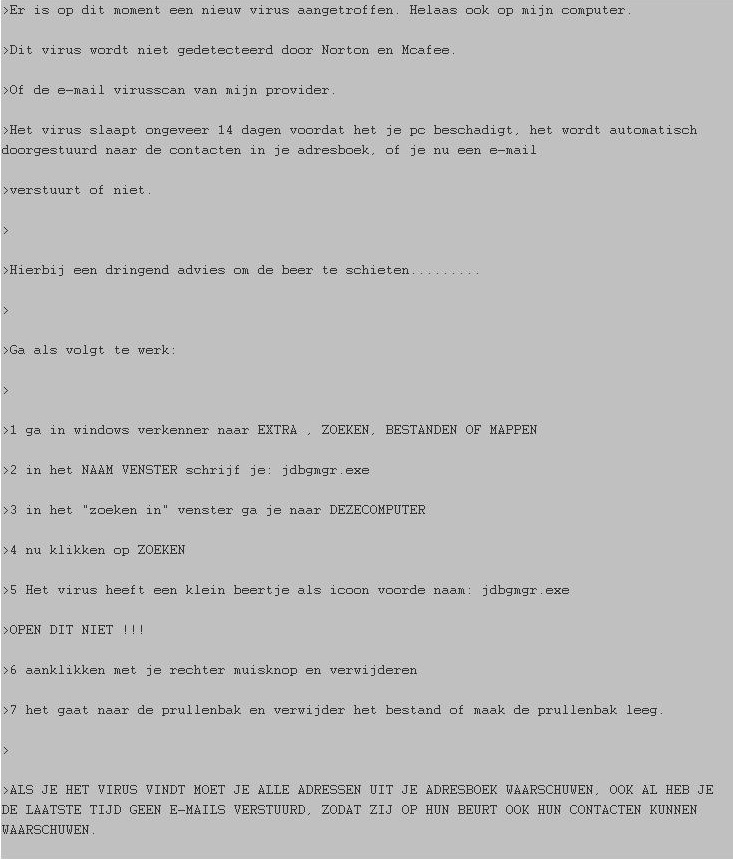It can happen that a fake email or hoax ends up in your mailbox. These emails often indicate a serious threat that needs immediate attention. They provide advice and request that you forward the email to everyone in your address book. Never go into this! These digital chain letters can cause harm if you forward them.
hoax
A fake message is also referred to as a hoax. In principle, that term is used for all kinds of fakes. In the computer world, the word hoax is used for a fake email. It often concerns improbable (financial) offers, rescues for pathetic children or warnings about particularly dangerous computer viruses. Characteristic of the fake e-mail is the call to forward the message to others.
Sometimes the fake emails even prompt you to take another action: They then claim that a dangerous virus has been found, name its name, explain how to check if it is present on your PC and how to remove it. An example of this is the ‘Jdbgmgr.exe’ hoax. However, the file ‘Jdbgmgr.exe’ is by no means a virus. It just belongs on your computer and you better leave it alone…
In the image below you can read a passage from the ‘Jdbgmgr.exe’ hoax.

Fear
This category of fake emails always plays on feelings of fear. The virus is serious, it will damage your PC beyond repair, there is no virus scanner that detects it yet, and so on. In addition, it is often suggested that reliable parties have already noticed and warned about the virus. For example, in the image you can read a few passages from another fake email.

Hazards
Fake e-mails present two dangers: you are tempted to do something you should not do, and you are urged to forward the fake e-mail to all your acquaintances. The latter is what makes spammers especially happy. If you, and many others with you, forward the e-mail to everyone you know, the e-mail becomes a colorful repository of e-mail addresses. A receptacle that spammers can collect, after which you end up in a spam file and are the loser. Never forward e-mails that explicitly ask you to forward the e-mail.
Protection
What can you do about fake emails? It’s very simple: learn to recognize them and throw them away immediately! Fake emails are easy to spot:
- It is often (but not always) screamed in
“SEND THIS TO ALL YOUR ADDRESSES!!!!!” - There is always the request to forward the e-mail
“Send this email to anyone you have their email address with, whether you can delete them or not. Even to the person who sent you the email. Better get the email 10 times than not.” - The use of language is not always correct, as the example above shows.
Scammed?!
Have you received a suspicious email but are unsure whether it is fake or genuine, even after reading the above? Then surf to Scammed.nl and click at the top of the menu Alerts. You will see an overview of all known fake emails and other warnings, ordered by date. You can read a warning in its entirety by clicking Read more.
On the left of the screen you will also see a search field. For example, under ‘Search alerts’, type the sender of the email you received. Then you can check whether previous reports have been received about this.
Please note: if the type of mail you have received is not listed, this does not immediately mean that your mail is genuine. Stay alert.